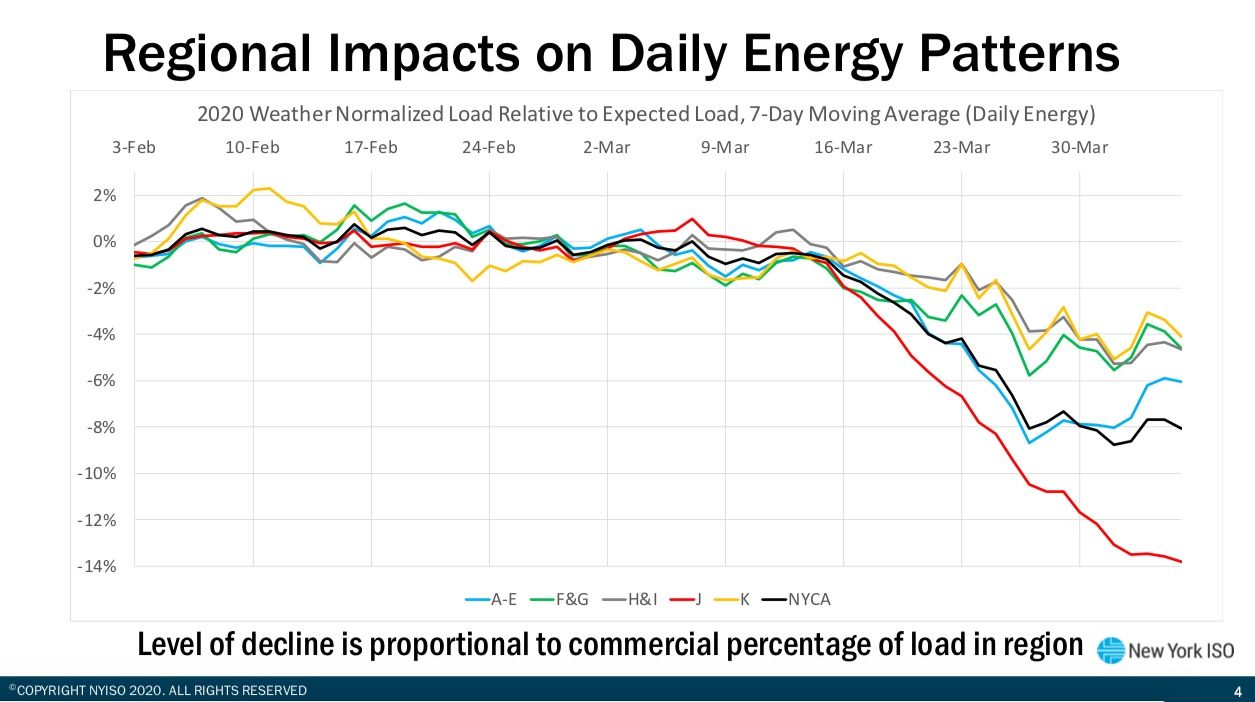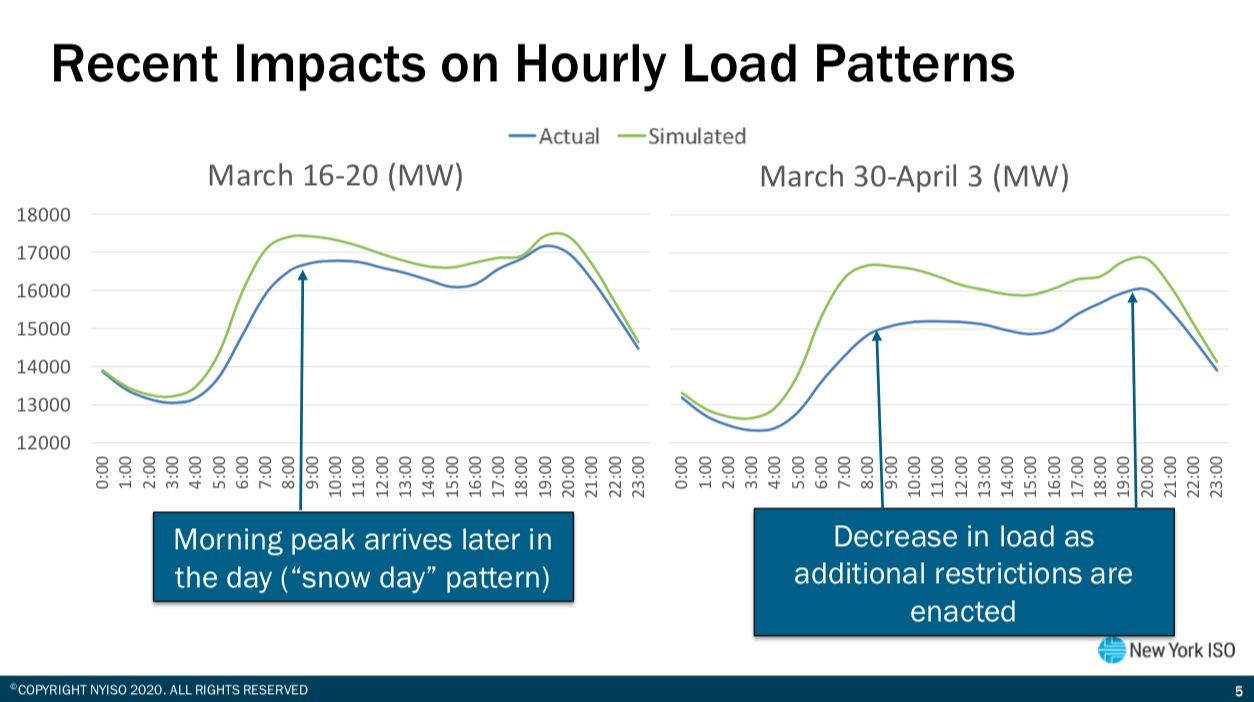New York has closed all nonessential businesses to battle the country’s worst outbreak of the coronavirus pandemic, and the resulting effects on electricity demand are becoming starkly apparent.
State grid operator NYISO released data Thursday showing significant drops in energy demand across the state as the lockdown entered its third week. The drop is particularly striking in New York City — down as much as 18 percent at times — where the commercial sector uses a much higher proportion of total electricity than in the state as a whole.
NYISO’s data runs through April 6 and has been weather-normalized to account for temperature differences from previous years.
Daily energy use across the state was down by nearly 8 percent during the last two weeks of March and into the first week of April, even after adjusting for weather, according to NYISO. That means demand has weakened since the first week of the lockdown, as the chart below indicates.
"Demand across New York state is clearly impacted by COVID-19 related closures,” Rich Dewey, NYISO CEO, said in a statement.

NYISO has seen drops across different parts of the state, with declines proportional to the commercial percentage of load in each region. This difference is most clear in New York City, or “Zone J” in NYISO parlance.
This region, served by utility Con Edison, saw average load declines fall from about 6 percent below normal in the first days of the statewide lockdown to nearly 14 percent below normal levels as of early this week (as shown by the red line in the chart below).

In terms of hour-by-hour demand in New York City, NYISO is seeing even bigger drops during the 7 a.m. and 8 a.m. hours on weekdays — the times when most office buildings and other businesses would be turning on lights, HVAC systems, elevators and other major electric loads.
During those hours, demand in New York City has fallen as much as 18 percent below typical levels, while across the entire state, or the New York Control Area (NYCA), demand has fallen by as much as 12 percent. Nighttime load changes are far less pronounced, at 1 to 2 percent below typical levels.

Increased residential electricity demand from people staying at home under lockdown has led to morning peaks arriving later in the day and extending into the midday hours.
In the first week of lockdown, those load shifts resembled what NYISO expects to experience during “snow days” when heavy snowfall keeps schools and businesses from opening. In the past week of lockdown, total loads have decreased even further, as the pandemic has intensified and more restrictions have been put in place.

NYISO has taken extreme measures to protect its grid operations from the COVID-19 outbreak in the state, including asking its grid operators to volunteer to live in trailers at its grid operations centers, isolated from their families and the outside world, to protect them from exposure to the virus.
It’s also staying in close touch with the state’s utilities and power plant operators, which are taking measures to prevent critical personnel from falling sick and putting the state’s power operations at risk.
Other states and grid operators are also seeing significant drops in demand. California grid operator CAISO has reported weather-adjusted load reductions from 5 percent to 8 percent on weekdays and from 1 percent to 4 percent on weekends, since it instituted a statewide lockdown and halt to all nonessential work on March 19. It has also seen increasing curtailments of its large and growing share of solar power over that time. Grid operators in New England, Texas, the Midwest and mid-Atlantic regions have reported smaller demand declines
The economic disruptions caused by the COVID-19 outbreak are expected to drive down overall demand across North American power markets over the coming months, Wood Mackenzie Power & Renewables reported this week. The U.S. Energy Information Administration predicts that electric power sector generation will fall 3 percent in 2020, with coal-fired power plants taking the biggest hit but wind and solar power also seeing slower growth.




